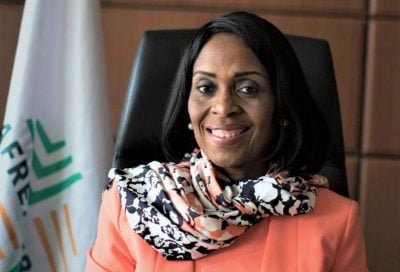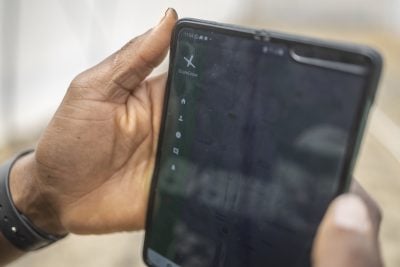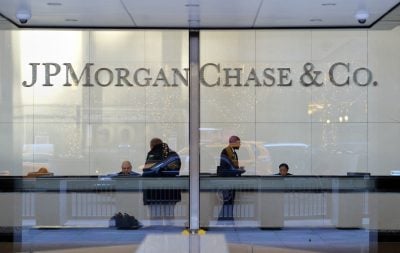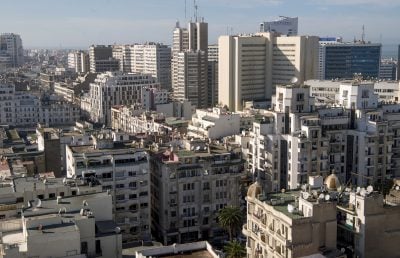The 59th annual meeting of the African Development Bank (AfDB), held in Nairobi in May, was significant for several reasons, not least the fact that the bank’s board of governors unanimously approved a $117bn general callable capital increase. The decision has lifted the authorised general capital of the bank from $201bn to a record $318bn.
“It’s a major demonstration of the faith and the confidence our shareholders have in us, and our ability to use our resources well to mobilise additional capital to do even more,” declared Akinwumi Adesina, president of the Bank, at a press conference at the close of the meeting. Njuguna Ndung’u, Kenya’s finance minister and current chairperson of the board of governors of the AfDB, welcomed the move.
“As host of the African Development Bank’s 2024 Annual Meetings, Kenya is especially pleased that all shareholders of the Bank have once again demonstrated their overwhelming support,” he told reporters. “We welcome this important signal to the market that the Bank is a strong institution committed to a standalone AAA rating.”
The callable capital increase will enable the lender to respond to its member countries’ substantial development finance needs. AfDB’s stronger balance sheet will also prove instrumental as it forges ahead with its new ten-year strategy, unveiled during the meetings.
“The ten-year strategy outlines how the Bank will invest in Africa’s best asset: its vibrant young men and women. Africa’s population, which is the fastest-growing in the world, presents the continent with an unparalleled demographic window of opportunity,” Adesina said.
In addition to investing in Africa’s human capital, the strategic plan also places considerable emphasis on climate change and adaptation. “Recognising Africa’s vulnerability to climate change, the Bank will promote low-carbon development pathways aligned with the Paris Agreement while safeguarding biodiversity and nature,” reads a statement on the strategy, which will run through 2033.
Other core areas of focus in AfDB’s strategic plan for the next decade include supporting fragile states, building resilience and promoting good governance.
“Amid rising conflicts, fragility, and political instability in Africa, the Bank will intensify efforts to assist fragile countries. Special attention will be given to tackling cross-border challenges and reducing the isolation of landlocked and remote areas,” the lender said.
Progress on SDRs emboldens African leaders
Calls for the reform of the global financial architecture intensified during the meetings, with African leaders commending the active leadership of the AfDB in pushing this agenda. Notably, the AfDB, along with the Inter-American Development Bank, is spearheading bold financial innovations to enable the International Monetary Fund (IMF) to channel Special Drawing Rights (SDRs) to countries that need them through multilateral development banks.
The two multilateral development banks have jointly devised a financial mechanism to leverage SDRs more effectively. This hybrid capital instrument, which was approved by the executive board of the IMF in May, will be treated as equity on both institutions’ balance sheets, ensuring they retain their strong credit ratings while supplying capital to countries in need. Additionally, it is backed by a so-called liquidity support agreement among contributing shareholders, essentially ensuring that countries providing Special Drawing Rights (SDRs) can still consider them as reserves.
“This will transform SDRs from static foreign reserve assets into dynamic lending instruments, at an affordable cost, to finance development, while preserving their reserve asset status, at zero cost to taxpayers in SDR-rich countries,” remarked Adesina at a special roundtable convened at the COP28 UN climate conference in Dubai in December to discuss leveraging SDRs for climate and development.
The IMF disbursed $650bn in Special Drawing Rights (SDRs) in 2021, in the wake of the Covid-19 pandemic, to bolster countries’ resilience in the face of the global crisis triggered by the pandemic.
However, Africa, home to over 1.2 billion people, received a mere $33bn, representing a paltry 5% of the total allocation. This share was the smallest among all regions worldwide. Latin America and the Caribbean fared only slightly better, securing just 8% of the total SDR allocation.
In response to this imbalance, the African Union at its meeting of heads of state in February 2022 urged wealthy nations to increase the SDR allocation to the continent to at least $100bn and to channel part of this through the AfDB. The SDR is an international reserve asset created by the IMF to supplement the official reserves of its member countries. Its value is based on a basket of world currencies (US dollar, euro, Chinese yuan, Japanese yen and British pound).
“The multiplier effect of the re-channelled SDRs will significantly increase the lending capacity of the African Development Bank,” remarked Kenya’s President William Ruto in his speech the official opening of the AfDB’s annual meeting. “This initiative has the potential to unlock additional financing for high-priority and transformational development projects, which are currently constrained by available resources.”
Correcting biases in credit ratings
While commendable progress is being made to give Africa a higher share of SDRs, there remains much work to align the global financial architecture with Africa’s development requirements. The interest rates that African countries are compelled to pay when accessing international capital markets, for instance, are usurious when contrasted with what advanced economies pay.
“We routinely borrow from international markets at rates far above those paid by the rest of the world, often up to 8 to 10 times more,” Ruto said. “These rates are said to factor in an arbitrary risk profile that is notably not applied when considering mineral extraction, even in areas of active conflict.”
The problem with the “Africa debt premium” that countries on the continent must pay when they access capital markets is that it conflicts with some surveys, which show that default rates in Africa are lower than in other parts of the world. A Moody’s analysis of the default rates for global infrastructure shows, for example, that Africa had the lowest default rates at 5.5% – lower than Asia’s 8.5% and Latin America’s 13%.
Some leaders believe the time has come for Africa to set up its own credit rating agencies, arguing that the incumbents offer biased assessments of default risks on the continent. At a side-event specifically focused on this topic, Ahunna Eziakonwa, assistant secretary-general and director of the United Nations Development Programme (UNDP) Africa Bureau, cited a report released by the UN agency last year that identified biases in credit rating methodologies that lead to higher borrowing costs for African countries. The report estimates that more objective assessments could save these countries up to $74.5bn.
UNDP collaborated with Africatalyst, a global advisory firm, to launch a credit rating platform designed to help African countries navigate their credit ratings processes more effectively.
“We are proud to launch the Africa Credit Ratings Initiative in collaboration with Africatalyst, which aims to strengthen the capacity of African countries to navigate complex global credit rating systems effectivel,” Eziakonwa said during the launch. Ultimately, the idea is for Africa to have its own credit rating agency – an idea that has earned the support of both the AfDB and the African Union.
Experts argue that the problem with African debt is not just the interest that is paid, but also the tenure of the loans. Repayment periods in Africa tend to be shorter than elsewhere around the world.
“Long-term development cannot be based on short-term loans,” said US economist, academic and public policy analyst Jeffrey Sachs. ”The loans granted to Africa should have at least a 25-year term, or longer. Short-term borrowing is dangerous for long-term development.”
Africa must step up domestic resource mobilisation
According to the AfDB, the structure of African debt has changed considerably, making Africa’s borrowing more costly and debt renegotiations more complex and protracted. Bilateral debt now represents 27%, compared to 52% of total debt in 2000, whereas commercial debt accounts for 43% of total debt, up from 20% in 2000.
The bank estimates that Africa’s total external debt, which stood at $1.12 trillion in 2022, had edged up by about $30bn to $1.152 trillion by end-2023. With global interest rates at their highest level for 40 years, and as multiple bond debt securities issued by African countries reach maturity, there is no shortage of challenges in 2024. Africa will pay out $163bn just to service debts in 2024, up sharply from $61bn in 2010.
“The growing burden of debt repayments has the potential to threaten achievement of the Sustainable Development Goals on the continent, particularly in health, education and infrastructure,” notes the lender in a statement.
According to Kevin Uramah, chief economist and vice president for economic governance and knowledge management at the AfDB, the high cost of debt service in African countries is heightening the severity of the debt burden on the continent.
“Average debt service payments rose 12.7% in 2020-22 relative to 8.4% in 2015-19,” he said during the launch of the Bank’s African Economic Outlook 2024 report.
Notably, the growing reliance on commercial debt has come at a steep cost. Uramah noted that “interest costs on debt from capital markets costs African countries 500% more than that from multilateral development banks.”
This comes amid tighter global financial conditions that have made it harder for Africa to capture international capital flows.
“Total external financial flows to Africa fell by 19.4% in 2022 relative to 2021. Foreign Direct Investment declined by 44% over the same period while official development assistance slipped by about 6%.”
While many are optimistic that the downtrend in international capital flows to Africa could reverse once global interest rate cuts gain momentum, the real solution lies in Africa mobilising its own resources. Domestic resource mobilisation is still low in many countries, with the median tax-to-GDP ratio for African countries standing at 14% versus the 27% that is needed to close the financing gap, Uramah contends.
The challenge with growing taxes in Africa, however, is that the base of taxpayers on the continent is still largely composed of informal players. Increasing taxes too fast without finding innovative ways of bringing informal workers into the fold could overburden the formal sector and lead to a decline in output, impacting jobs and economic growth. It’s a delicate balancing act that highlights the need to also think critically about boosting non-tax revenue.
One innovative idea to boost non-tax domestic revenue that was put forward during the AfDB annual meetings was the use of the continent’s vast natural resources to unlock financing. “We know that Africa possesses immense commodity wealth. Let’s start by looking at the resources in each of our countries and consider how we can make the most of them,” noted Amadou Hott, special envoy of the AfDB Group President to the Alliance for Green Infrastructure in Africa (AGIA), in a panel on mitigating the foreign exchange risk in energy financing. He noted that the AfDB is working to improve the capacity of African countries to better negotiate taxes and royalties from their vast natural resources.
Maureen Hinda-Mbuende, Namibia’s deputy minister of finance, supported this view. ‘If we want to lift Africa out of poverty, we need to do more than pool our resources – we also need to act on pricing. Many of our resources leave our continent without us being aware of their real value,” she said.
The African continent has 60% of the world’s solar capacity and 50% of its wind power capacity. It also has 71.4% of the global reserves of cobalt, 76% of platinum and 58% of manganese. And yet, Africa currently attracts just 3% of global investment in energy and 2% of all investments in green energy. While lamentable, this underscores the opportunity to leverage Africa’s natural resource endowment to capture a higher share of global investments in the energy transition.
Transformation and regional integration essential
Uramah noted that Africa’s economy, while beset by challenges ranging from high debt to lower global capital inflows, has remained remarkably resilient amid the challenging backdrop.
“Despite challenges in 2023, fifteen countries recorded real growth of at least 5%; that number could reach 17 in 2024.” Moreover, 10 African countries are projected to be among the world’s 20 fastest-growing economies in 2024, he noted.
However, growth without transformation and regional integration will not be impactful; it will not translate into a higher quality of life for Africans, argues Mavis Owusu-Gyamfi, executive director and incoming CEO and president of the African Center for Economic Transformation (ACET), a think tank.
“Economic transformation is a broad term that can mean different things to different people. At ACET, we define economic transformation as growth that is accompanied with improvements in diversification, export competitiveness, productivity, technology, and human well-being,” she told delegates.
Owusu-Gyamfi also called for faster regional integration. “We must trade with each other and not just look outward. The rest of the world wants our raw materials and we need finished products. Let’s collaborate to build these finished products and first sell them in the region and over time we will gain access to global markets,” she observed.
This, she says, will require African countries to ratify the African Continental Free Trade Area (AfCFTA) protocols so that skilled people can move freely across the continent to take jobs where they are available, and so that “the individual pieces that make up a finished product can move across countries quickly and safely.”
Like many experts who African Business spoke to at the AfDB meetings in Nairobi, Owusu-Gyamfi also believes that domestic resource mobilisation will help cut Africa’s reliance on international capital markets. She cautions, however, that taxes must be administered in an equitable way to avoid rolling back the gains made in fighting poverty.
“Our domestic revenue mobilisation must improve dramatically. We have to use technology to build and enforce tax regimes that do not disadvantage the poor and do not cripple the growing middle class, in order to fund our development priorities,” she noted.
Want to continue reading? Subscribe today.
You've read all your free articles for this month! Subscribe now to enjoy full access to our content.
Digital Monthly
£8.00 / month
Receive full unlimited access to our articles, opinions, podcasts and more.
Digital Yearly
£70.00 / year
Our best value offer - save £26 and gain access to all of our digital content for an entire year!
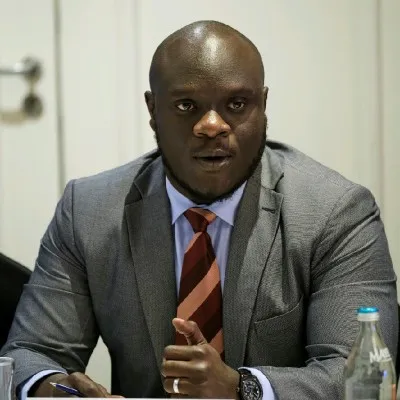
 Sign in with Google
Sign in with Google 
